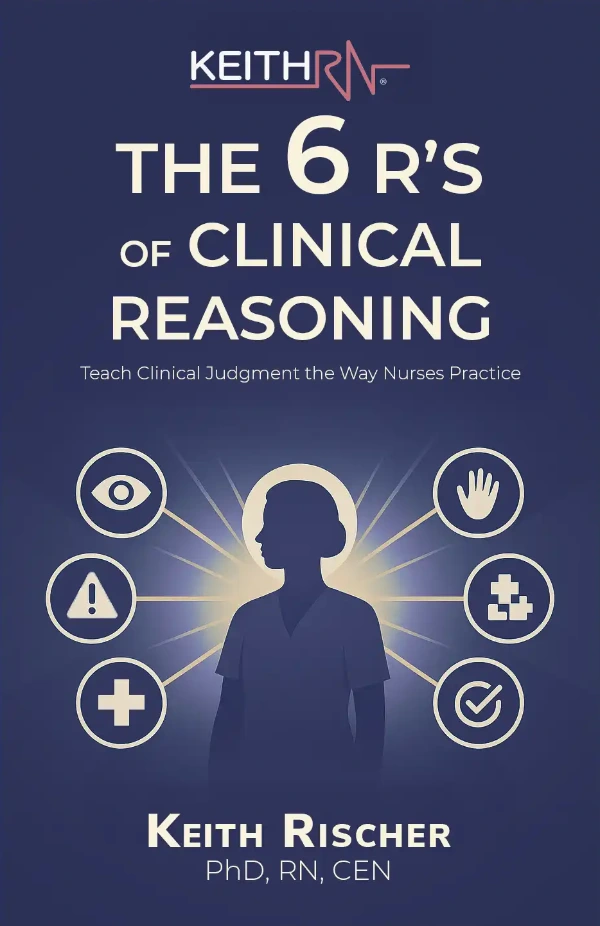
Though critical thinking has numerous definitions, it can be succinctly defined as the commitment by the nurse to think clearly, precisely, and accurately and to act on what the nurse KNOWS about a situation (Potter & Perry, 2009).
But there is one character trait that must be emphasized, integrated in nursing education as well as internally present by each nurse to strengthen needed critical thinking so that a correct clinical judgment is made…
Empathetic caring (Pai, Eng, & Ko, 2013)!
Why Caring Matters
It is not just what a student knows, their inward motivation that is influenced by caring and engagement are also critical and central to nursing practice.
Though nursing students may be caring, as novice nurses they emphasize the importance of tasks and and often forget that there is a patient that needs to be cared for (Benner, 1984)! See past blog Where’s the Caring?
In order to be a true professional, nursing students and nurses must possess caring, caring behaviors, and critical thinking skills to make correct clinical judgments in practice.
Study Validates Importance of Caring
In one recent study, a structural equation model was used to test the relationship between caring behavior and critical thinking skills. This study identified that nursing students with a higher frequency of caring behaviors that were measured had a statistically higher score (p<.001) on levels of critical thinking related to nursing practice.
This study recommended that nursing education should emphasize curriculum related to emphasizing caring behaviors to improve the disposition toward critical thinking of nursing students.
To improve critical thinking, caring behaviors and disposition to caring will strengthen this essential nurse thinking skill (Pai, Eng, & Ko, 2013).
The study reinforced that the strength of critical thinking can be predicted by the level of caring behaviors of students. One reason for this finding is that emotions and level of engagement are essential to how clinical data is interpreted. This is the first step (Tanner, 2006) that is required by the nurse to make a correct clinical judgment.
Another Study Validates
In a comprehensive survey of the nursing literature on caring and its benefits to both the nurse and patient, A higher level of nurse engagement will inevitably lead to heightened nurse vigilance to detect a possible problem.
When the nurse is engaged and motivated to care because this patient matters to them, concerning clinical data will more likely be recognized sooner and not later.
Time to Reflect
Reflection is a crucial component of professional behavior that every nurse in practice must utilize. It is also imperative for nurse educators by asking the following question:
How well does your program emphasize as well as integrate caring in the curriculum so students are able to integrate practical caring behaviors into their practice that will strengthen their ability to critically think?
How to Strengthen Caring and Critical Thinking
Caring is central to nursing practice, yet it is not consistently emphasized in the curriculum. It is often assumed to develop by osmosis or unable to be taught.
In my journey as a nurse educator, I have found that caring can be effectively intentionalized and integrated effectively in the clinical setting (see past blog Simple Strategies to Cultivate Caring in the Clinical).
I have found the middle range caring theory of Kristen Swanson foundational to integrating caring in the clinical setting. Swanson developed five qualitative themes and related caring interventions that can help students identify interventions that represent caring (Swanson, 1991).
For example in her theme “Being With” that represents the ability of the nurse to be emotionally present, the caring intervention of “conveying availability” communicates caring to the patient (Swanson, 1991).
One way to integrate this into practice is instead of simply saying to the patient, “Here is the call light call me if you need me”, the nurse can communicate caring by conveying availability and stating, “Here is the call light, I am available if you need me. Do not hesitate to call me.”
See my webpage “Can Caring be Taught“ for more information and resources to easily utilize in your setting.
Two Questions to Ask Every Clinical
Clinical educators use a variety of questions to determine what students know and their ability to critically think with their patient.
I would like to propose two additional questions that every student must reflect and answer in the course of each clinical either personally or in post conference.
The first question emphasizes empathy while the second integrates Patricia Benner’s definition of caring which is that the patient and their experience need to matter to the nurse (Benner & Wrubel, 1989).
- What is the patient likely experiencing/feeling right now in this situation?
- What can you do to engage yourself with this patient’s experience, and show that they matter to you as a person?
In Closing
Though it is imperative to prepare students for professional practice by emphasizing their ability to critically think and clinically reason to make a correct clinical judgment, in order to strengthen these essential nurse thinking skills they must also have a foundation of caring and caring behaviors.
Students today have a wide variety of reasons to enter the nursing profession, caring is not always the primary motivation as it has been historically.
Instead of bemoaning this current lived reality, nurse educators must embrace the responsibility to emphasize and integrate the centrality of caring to nursing practice.
By practically integrating caring in your clinical setting as well as role modeling caring and empathy to your students, you as a nurse educator will leave a lasting legacy that will impact not only each student, but the patients that they will care for as a nurse!
What do you think?
How do you integrate caring and its importance to nursing in your clinical or classroom settings?
Comment below and let the conversation begin!
Just Posted!
New YouTube: Comprehending Cardiac Medications (3 of 3): ACE Inhibitors
Do your students know what an ACE-I is inhibiting and how this pharm class impacts determinants of cardiac output? This brief video will help them deeply understand this essential content!
References
- Benner, P. (1984). From novice to expert: Excellence and power in clinical nursing practice. Upper Saddle River, NJ: Prentice Hall
- Benner, P. & Wrubel, J. (1989). Primacy of caring: Stress and coping in health and illness. Menlo Park, CA: Addison-Wesley Publishing Company.
- Pai, H,. Eng, C., & Ko, H. (2013). Effect of caring behavior on disposition toward critical thinking of nursing students. Journal of Professional Nursing, 29(6), 423-429.
- Potter, P. A. & Perry, A. G. (2009). Fundamentals of nursing. (7th ed.). St. Louis, MO: Mosby–Elsevier.
- Swanson, K. M. (1991). Empirical development of a middle range theory of caring. Nursing Research, 40(3), 161–166.
- Swanson, K. M. (1999). What is known about caring in nursing: A literary meta-analysis. In A.S. Hinshaw, S.L. Feetham, & J.L.F. Shaver, eds. Handbook of clinical nursing research. Thousand Oaks, CA: Sage Publications.
Keith Rischer – PhD, RN, CEN
As a nurse with over 35 years of experience who remained in practice as an educator, I’ve witnessed the gap between how nursing is taught and how it is practiced, and I decided to do something about it! Read more…
The Ultimate Solution to Develop Clinical Judgment Skills
KeithRN’s Think Like a Nurse Membership
Access exclusive active learning resources for faculty and students, including KeithRN Case Studies, making it your go-to resource.




